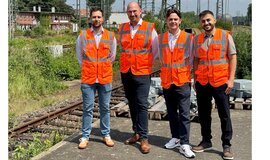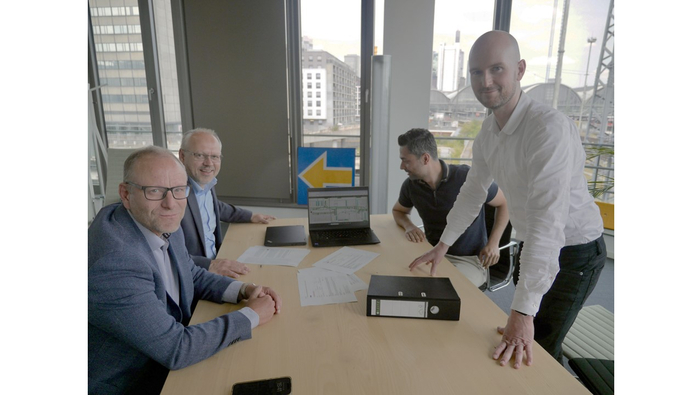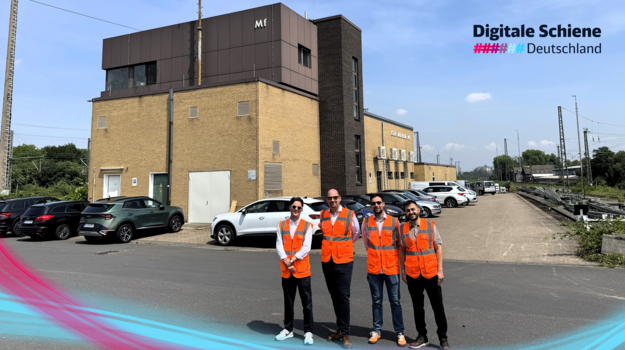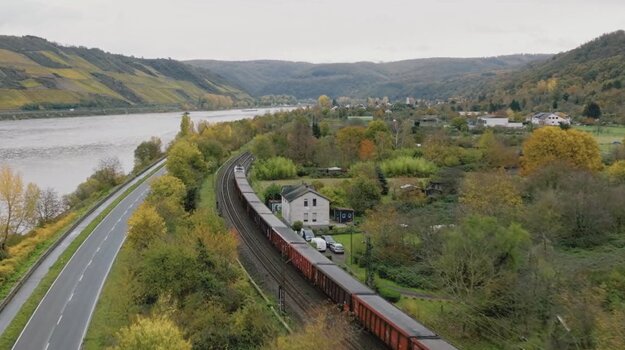
Innovative thinking: piloting a new type of technology for cable earthworks for control and safety technology and telecommunications measures in Cologne-Mülheim
In order to facilitate the start of the construction phase – e.g. when building an interlocking – and to minimise track possessions in train traffic, innovative materials are being used in a pilot project on the Corridor Rhine-Alpine and a new method for laying cable troughs is being tested. As part of the new construction of the modern interlocking in Cologne-Mülheim, the project team wants to set innovative impulses in cable earthworks. The aim is to use GRP (glass fibre reinforced plastics) for cable troughs and shafts and at the same time create the conditions for using a new laying technique in other projects in the future.
Every year, Deutsche Bahn lays kilometres of cable troughs for energy supply and telecommunications. For many years, cable earthworks have been carried out using traditional two-way technology.
A closer look - this is how traditional cable earthworks are typically carried out using a road-rail excavator:
A road-rail excavator excavates the cable duct. A fine layer (sand) is then placed in the excavated duct to drain off excess water. The cable trough is then inserted by the road-rail excavator. The cable troughs are then closed with the appropriate covers. The cavities to the right and left of the cable troughs are then backfilled and compacted. The cable troughs are then opened again and the cables themselves can now be laid inside.
The use of a road-rail excavator is complex. Before an interlocking is built, many kilometres of new cable ducts must be laid in order to be able to connect all the points and signals later. More effective methods and techniques in cable earthworks could minimise the line closures required for construction and thus help to speed up the implementation of a new, modern interlocking. Such an innovative process in conjunction with the use of lightweight, glass fibre-reinforced plastic cable troughs and shafts is now being tested for the first time in a pilot project as part of the new Cologne-Mülheim interlocking construction.

The installation method being used is being trialled on a section of the Cologne-Mülheim - Bergisch Gladbach line on behalf of the Corridor Rhine-Alpine project. The contract for the underground cable construction was already awarded in May 2025 and the piloting itself is scheduled to begin this year. The aim is to test the installation method in operation and to use the experience gained to optimise future interlocking implementations. A successful pilot would have a positive impact on the realisation of the planned digitalisation of interlocking technology in Germany.
The new laying method in conjunction with GRP cable troughs and shafts combines the excavation and laying of the cable trough in a single operation, which significantly speeds up the process compared to the conventional method using a manual two-way excavator. Only in the case of obstacles such as bridges or masts close to the track does the manual laying technique still have to be used.
The Executive Board for Infrastructure and Communication Technology at DB InfraGO AG, Klaus Müller, sees the piloting of this new method as a great opportunity for the future of underground cable construction:

"We look forward to driving innovation in the field of cable laying in order to effectively accelerate the roll-out of modern interlocking technology in the long term."
The overall project manager of the Corridor Rhine-Alpine project, Ulrich Kohlenberger, is also confident about the pilot project and its potential for cable earthworks:

"This pilot project has the potential to speed up cable earthworks at DB and thus drastically optimise the precious construction time of our future interlocking projects."
The entire project team led by subproject manager Markus Henrich is now working under the leadership of the commissioned company Niedax GmbH & Co. KG on the next milestones – with the aim of completing the realisation, testing and product approvals next year.

